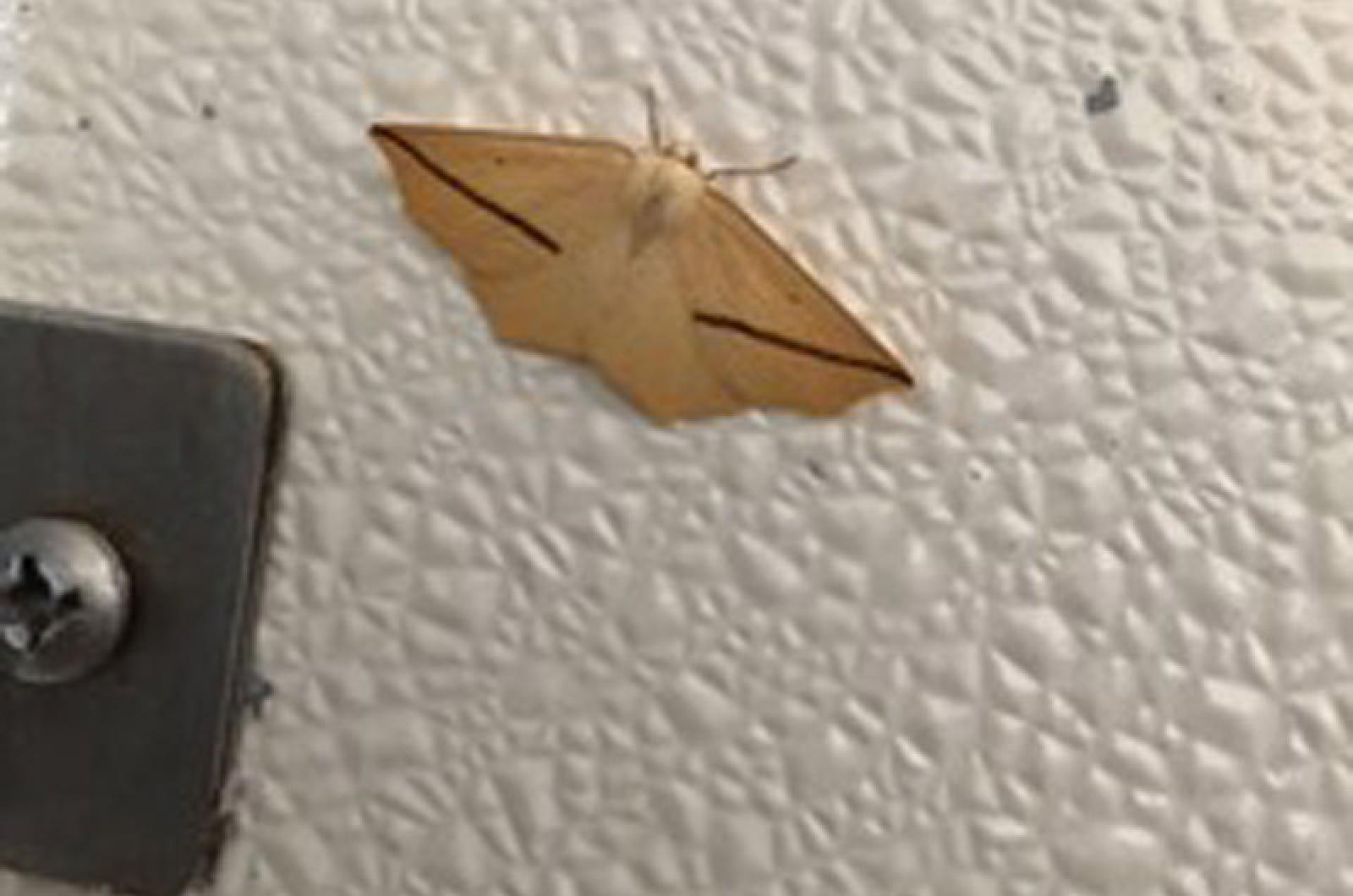Wildlife can be found in some of the most unusual places. How else can you explain a yellow slant moth in the men’s restroom at Menemsha? To be sure, the toilet stall is not the typical habitat for this mesmerizing moth. These night flyers generally prefer deciduous woodlands and shrubby areas. However, last weekend, the slant line moth was found loitering against the stall wall.
The yellow slant line is striking, and (after washing his hands of course), my husband took a picture since he knew I would want to see this insect and didn’t want me barging in on the boys.
Thomas Harris, author of The Silence of the Lambs, acutely understood the contradiction of a moth when he mused, “Most people love butterflies and hate moths . . . but moths are more interesting — more engaging.”
Modern American author Veronica Roth had less positive feelings for moths, explaining, “They’re disgusting,“ and further denigrating “those papery wings and their stupid bug bodies...”
Even Charles Dickens couldn’t find his way to love the night flyers, likening them to “all sorts of ugly creatures.” Shakespeare, however, liked the name Moth well enough to bestow it on two separate characters in two of his plays.
I disagree with all of the moth maligners and am amazed and fascinated by the yellow slant line moth and all of its moth relations. The yellow slant line impresses both as an adult and as a larval insect. The adult moth is a lovely creamy yellow with dots on both of its forewings and a brown line across them. It flies from May to August and overwinters in its larval form.
Surely the most extraordinary part of this insect’s lifecycle is its caterpillar. Known as a twig mimic, the caterpillar is so reminiscent of a twig that even the most careful observer might miss it. This cryptic defense strategy provides for the best chance of survival. In its final molt, the caterpillar has a jagged’ edge that looks like a torn twig. Adding to its look is its behavior.
The caterpillar extends off a twig, and even when plucked from its wooden perch, it will remain rigid and branch-like in an attempt to confuse its predator. In your hand, it will not bend or curl and one might wonder if it would do the same in a bird’s beak, and even stay stiff as it goes down its gullet, hoping its camouflage and erect posture will save itself.
As member of the family Geometridae, the yellow slant line caterpillar shares a looping form of movement with others in the group. This type of effort suggests measurement of the area being traversed, and the name ‘Geometridae’ translates to measuring the earth.
The origins of the scientific name of this moth, Tetracis crocallata, aren’t as clear, but came from an obsessed Frenchman. Achille Guenée was a nineteenth-century French lawyer and entomologist consumed with moths. He was a founding member of the Entomological Societies of France, author of 63 publications on insects and writer of more than 1,300 pages about owlet moths.
Someone so obsessed may have shared a kindred spirit with moths and their well-known obsession with night lights — what Percy Bysshe Shelley called “The desire of the moth for the star, of the night for the morrow. The devotion to something afar from the sphere of our sorrow.”
Suzan Bellincampi is director of the Felix Neck Wildlife Sanctuary in Edgartown, and author of Martha’s Vineyard: A Field Guide to Island Nature.




Comments
Comment policy »